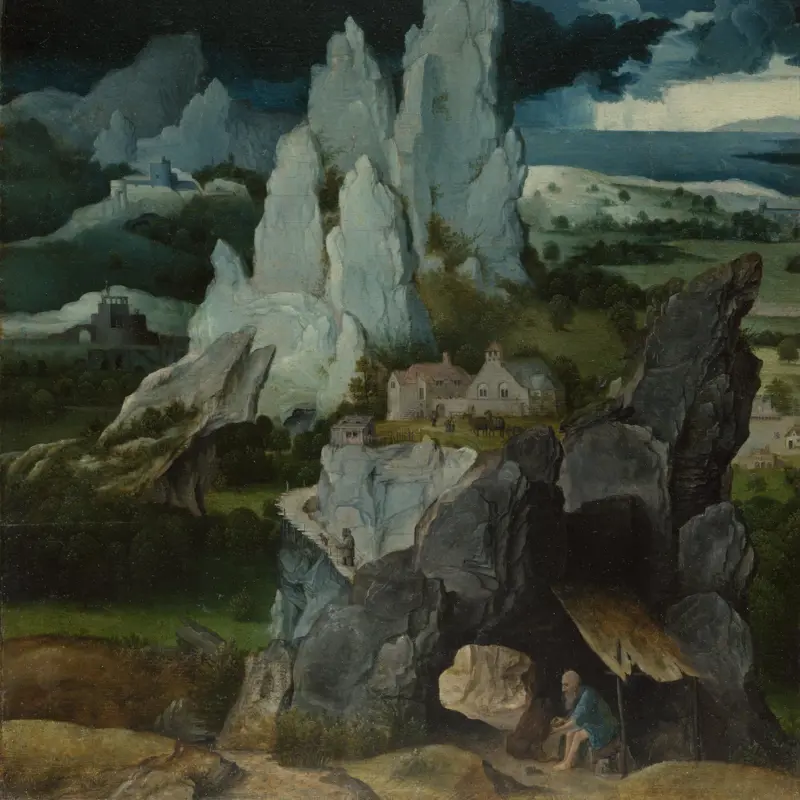Follower of Joachim Patinir, 'Landscape with the Rest on the Flight into Egypt', about 1518-20
About the work
Overview
The Virgin, seated in a large landscape, is feeding the Christ Child; luggage is scattered around her. To the right, we see a grazing donkey and Saint Joseph with a pack and walking stick. The holy family here rest as they flee to Egypt, driven away by King Herod’s order to execute infants under the age of two. The massacre is taking place in the distant village. In the background on the left, soldiers ride through a cornfield and another three question a reaper and a child. Further to the right a man guides a horse pulling a chain harrow.
This picture is basically a pastiche with elements taken from various paintings by Joachim Patinir. Its painter had so wide a knowledge of Patinir’s repertoire that he was perhaps working during his lifetime, possibly in around 1518 to 1520. His styles of underdrawing and painting are very distinctive and it should be possible to identify other paintings by him.
Key facts
Details
- Full title
- Landscape with the Rest on the Flight into Egypt
- Artist
- Follower of Joachim Patinir
- Artist dates
- active 1515; died not later than 1524
- Date made
- about 1518-20
- Medium and support
- oil on wood
- Dimensions
- 33 × 49.7 cm
- Acquisition credit
- Layard Bequest, 1916
- Inventory number
- NG3115
- Location
- Not on display
- Collection
- Main Collection
- Previous owners
Provenance
Additional information
Text extracted from the ‘Provenance’ section of the catalogue entry in Lorne Campbell, ‘National Gallery Catalogues: The Sixteenth Century Netherlandish Paintings: With French Paintings before 1600’, London 2014; for further information, see the full catalogue entry.
Bibliography
-
1945Davies, Martin, National Gallery Catalogues: Early Netherlandish School, London 1945
-
1955Davies, Martin, National Gallery Catalogues: Early Netherlandish School, 2nd edn (revised), London 1955
-
1987Davies, Martin, National Gallery Catalogues: The Early Netherlandish School, 3rd edn, London 1987
-
2001
C. Baker and T. Henry, The National Gallery: Complete Illustrated Catalogue, London 2001
-
2014
L. Campbell, National Gallery Catalogues: The Sixteenth Century Netherlandish Paintings: With French Paintings before 1600, 2 vols, London 2014
About this record
If you know more about this work or have spotted an error, please contact us. Please note that exhibition histories are listed from 2009 onwards. Bibliographies may not be complete; more comprehensive information is available in the National Gallery Library.

